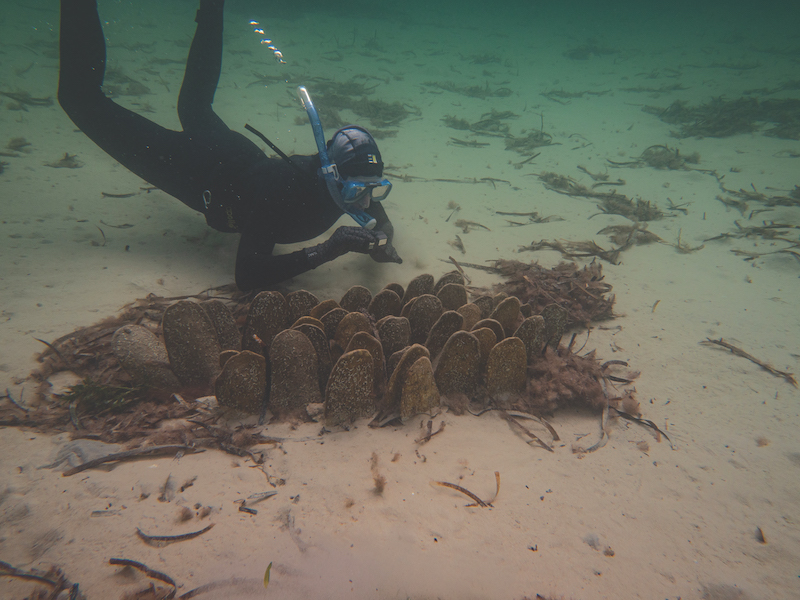The work of ceramicist Jane Bamford asks of art the vital question: “What if we defined a new design identity, to design for the environment powered by a very old idea of care?”
Bamford’s practice meets at the intersection between science and art, collaborating with institutions and communities to work towards a more sustainable future using the voice of the creative to advocate for our environment. A large part of her production for this project involves composing hand-made ceramic forms that act as art installation and functional solutions to problems spawned by overfishing and dredging. “It is estimated that 85 percent of oyster reefs have been lost globally,” she says.
Particularly compelling are her works that act as “artificial spawning habitats”. Bamford, in conjunction with scientists and environmental advisors, creates ceramic forms that are integrated into threatened environments, creating new habitats for marine life.
Her most recent project has been by far her most ambitious. Collaborating with marine biologists Paul Jennings and Alexandra Comino of the Kangaroo Island Landscape Board (KILB) in South Australia, the team set their sights on reanimating native oyster (Ostrea angasi) reefs, which have suffered an estimated 90 percent loss in the recent past. In an art-based, creative approach to the problem, Bamford hand-made 1,000 razorfish shells from clay. Comino states that “Razorfish are an important structural element found in the coastal waters around KI, as there are so few suitable habitats left where native oysters are found”.
By connecting with other disciplines and engaging her artistic talents, Bamford’s works look to a future form of art. “I believe we must focus on the step beyond the concept of sustainability and aim to work in the space of regeneration and restoration”, she states, “artists, working closely with scientists, are uniquely placed to translate scientific knowledge into possible practical solutions”.
If you would like to engage further with this project, visit the links provided.

